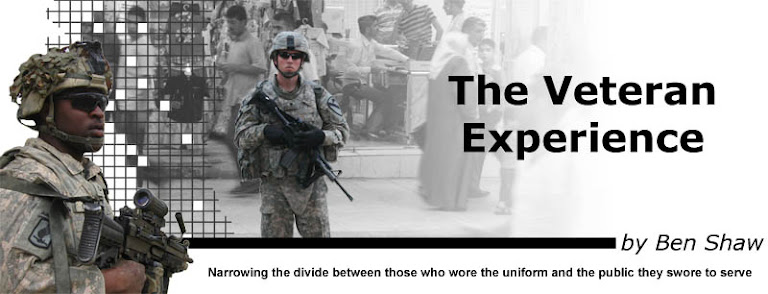Not long ago, a National Guardsman joked with me that he believed it requisite that a Guardsman never function in the MOS (military occupational specialty) for which he or she was trained. As an infantryman, he was currently serving as a military policeman. Nor is his situation unique.
I also remember speaking with a Soldier in a quartermaster unit whose job in laundry services had been dissolved, so now she and her Soldiers would be manning machine guns for convoy escort. Just yesterday I spoke with a man who, after nineteen years as an artillery officer, now found himself overseeing public sanitation operations for a large sector of a major Iraqi city. He seems to be doing well. In fact, they ALL seem to be doing well.
Rumors abound about the military’s rigid adherence to by-the-book doctrine; yet while there are probably situations where there is a lack of necessary compromise, I’m not seeing it out here. More clearly, I’m seeing astounding flexibility to a different mission. Such is the nature of counterinsurgency operations (COINOPS). There are a lot of “hats” the military leadership must wear.
On COB Brassfield-Mora, an entire infantry company is dedicated to reconstruction project planning, micro-grants, and facilitating communication and collaboration between various Iraqi security elements. On FOB Marez, a brigade does nearly the same thing. None of the projects, clearly, involve any sort of combat operations. Instead, they pertain to school reconstruction, medical service improvement, utilities, and encouraging the tourism industry. Additionally, they oversee road paving, street cleanup, parking lot construction, and a myriad of other non-military projects. The micro-grants are even more non-military; they’re intended to jumpstart local economies with sustainable, local business ventures. Frequently, they’re orchestrating the construction of greenhouses.
Wait, aren’t these infantry Soldiers? Yes, and just as many are military police and artillery. Moreover, they have received little to no training in the mission they now find themselves fulfilling. And on top of this new mission, they also maintain MOS proficiency – even though the likelihood of them needing it has diminished.
Many will probably ask why the US military is assuming responsibilities for which they received little preparation, and in some regards, this is a legitimate question. I think there are three primary explanations.
First, while the State Department Provisional Reconstruction Teams (PRTs) also conduct parallel (and overlapping) operations in these regions, the fact still remains that they are understaffed. Yet, there are more than 130,000 US military personnel in-country. They recently found themselves with a lot more free time. Second, these roles are relatively new (at least in their current complexity) for the military. Prior to June 30th (the date of US pullouts from Iraqi cities), these units were operating in capacities more aligned with their training. With the June 30th drawdown from the cities, these units are freed from the heavy burden of city security (which demanded the vast majority of their forces). Third, and perhaps most important, combat operations (and security threats) still persist – just on a reduced level.
A State Department element may have the personnel necessary to oversee micro-grants, but they lack the logistics and “bodies” necessary to maintain their own security and move about the country. The military remains vital to that aspect of the mission. US troops are still attacked, and they still respond with the ferocity befitting their basic combat training. Until Iraqi Security Forces demonstrate an ability to fully control their own battlespace, the US military will be needed to augment their efforts.
I find it humorous when I see an infantry officer soothing ruffled feathers between Iraqi Police and Army commanders, and funnier still when they inspect building projects. I can only imagine what’s running through their minds. Probably something to the effect of, “this isn’t what I signed up to do.” But that is never articulated. They have their orders, the mission needs completing, and they devote themselves fully to it.
In time, I imagine the mission will evolve into something different, requiring further “hats” be donned by combat troops – probably even further from combat arms. But I remain confident that they will do quite well. And should the artillery officer-cum-statesman be redeployed somewhere like Afghanistan, he will quickly return to his role as an actual artillery officer. The infantry officers, naturally, will be back out in the sand, humping a rucksack, and patrolling. That’s a mission they know thoroughly.
But it doesn’t seem to matter what their actual training and MOS designation may be. They seem uniformly equipped and ready to serve in whatever capacity is required of them. Call them rigid if you wish, but clearly they are not. They are creative, they are flexible, and they’re among the most capable achievers the United States has to offer. I don’t think there’s much they can’t do. To my knowledge, no other military force in the world is this adaptive. I wonder what “hat” we’ll have them wearing next.
Copyright © 2009, Ben Shaw, All Rights Reserved
www.byshaw.com
www.byshaw.com/blog

No comments:
Post a Comment